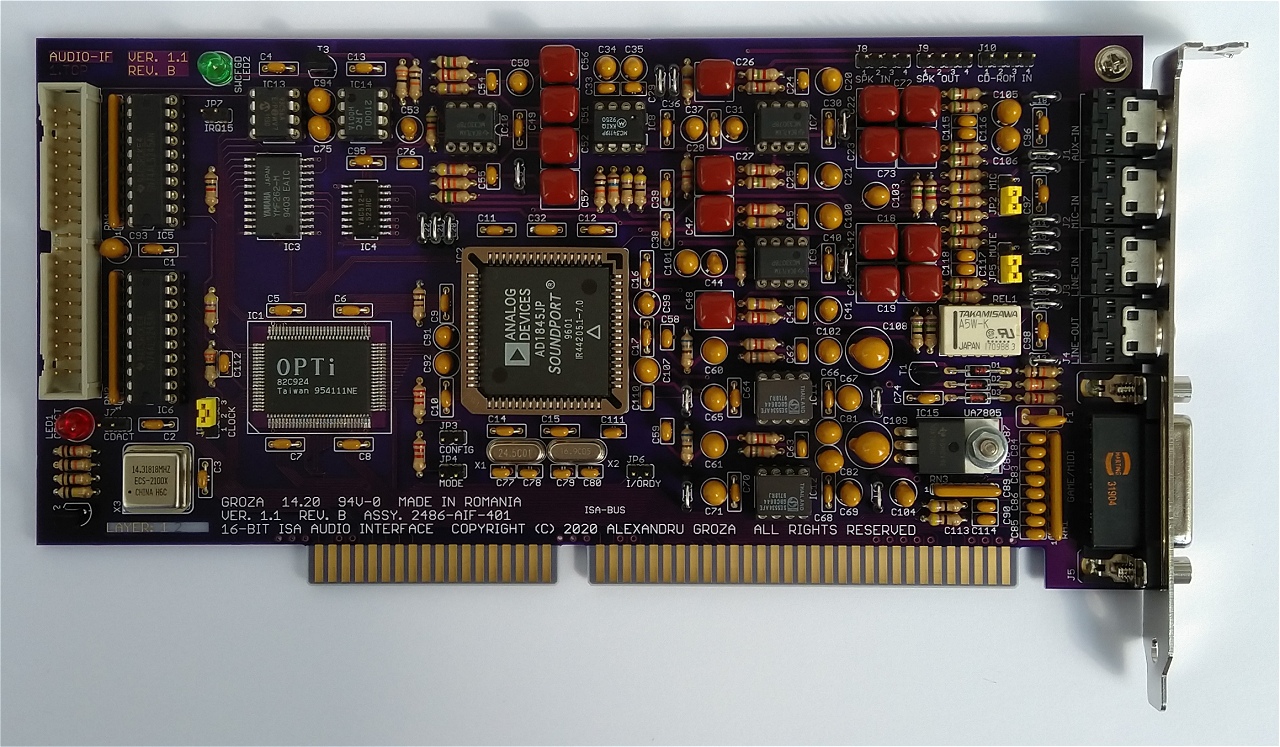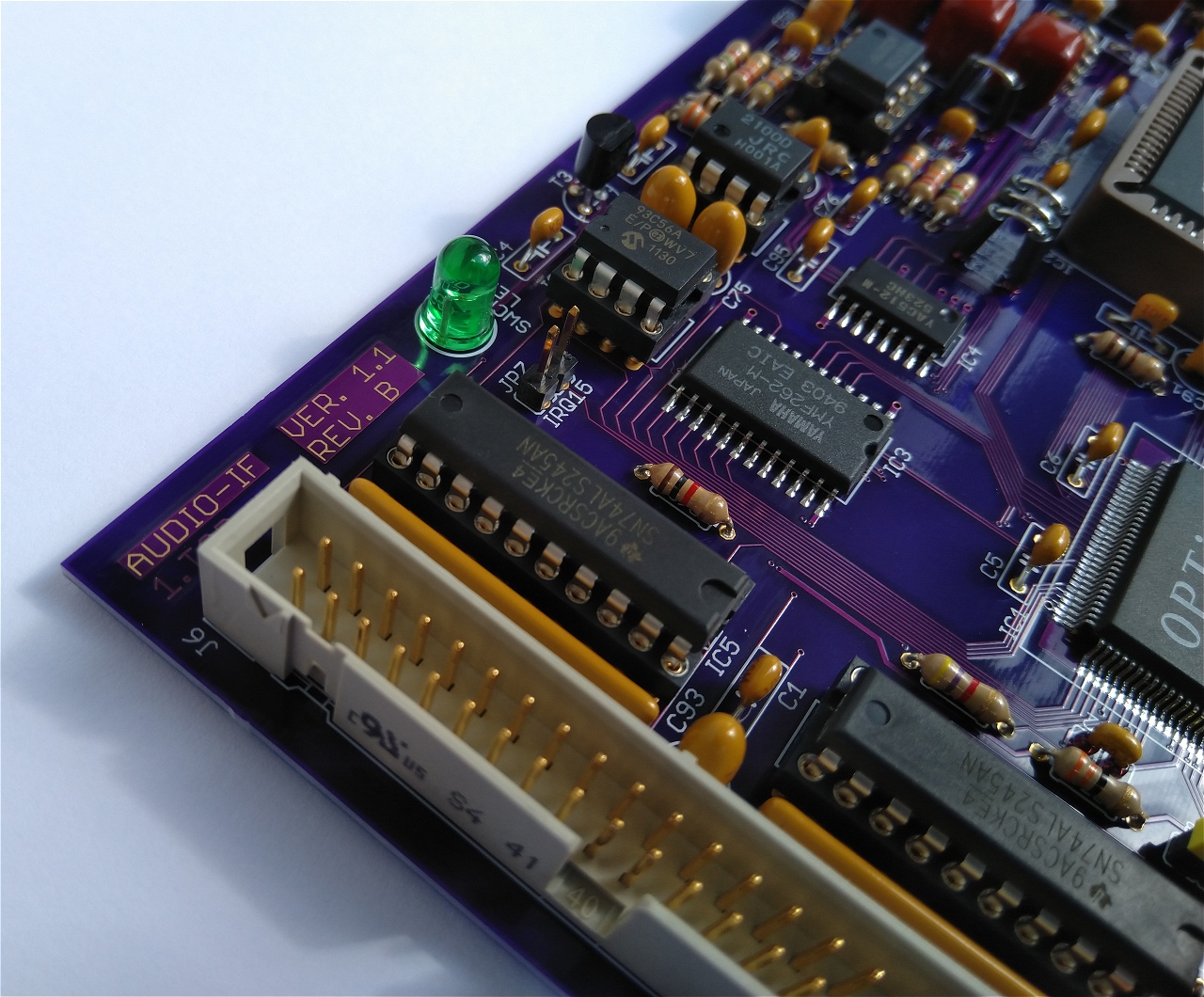First post, by ALEKS
- Rank
- Member
Hi,
I wanted to share with you something that I was working on for a while.
It's an ISA sound card that I designed for my own DIY computer. The PCB is on 4 layers, top and bottom being signal layers and inner layers being supply rails. I used individual analog and digital ground and power planes. Also for the analog section I used multiple isolated supply planes. As always everything is hand routed. Even though there are a lot of parts on this PCB assembly, Soldering them was a rewarding experience.
The noise floor is minimal and the sound is OK. Exactly as I remember it from the early 1990s.
I "stole" a steel bracket from another ISA sound card but it doesn't fit correctly -- which is expected, though. I will search whether there is somebody that can make a custom steel bracket for my design.



I did a video with how the thing sounds in various games. However I just recorded it with a digital still camera. It cannot possibly capture the sound in a quality format.
https://www.youtube.com/watch?v=PanPSUEo0yg
Cheers,
A.
TX486DLC / 40 MHz | 32 Mb RAM | 16-bit ISA Backplane | EXCELGRAPH ET4000/W32i 2 Mb | I/O Interface | Audio Interface | PC Speaker Driver | Signal View Interface
3.5" & 5.25" FDD | 4 x 512 Mb CF | HP 82341D Interface | Intel EtherExpress 16

